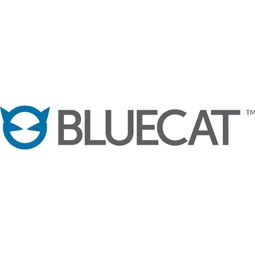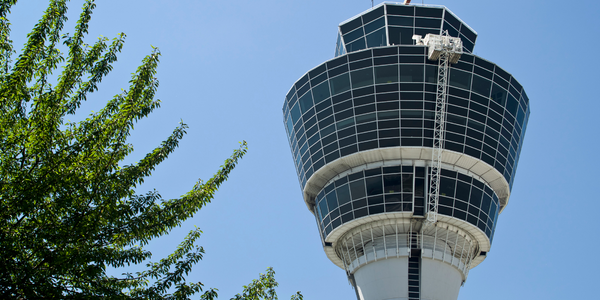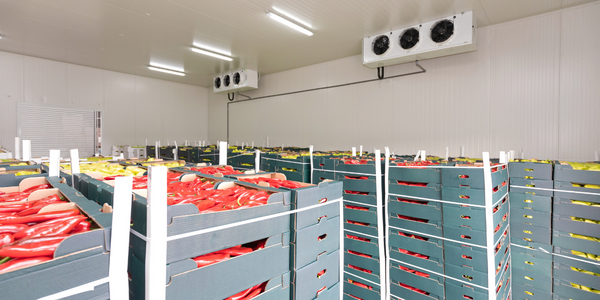BlueCat Helps Cologne Bonn Airport Redesign its Network Architecture to Improve IPAM, Gain Visibility and Streamline Processes

Customer Company Size
Large Corporate
Region
- Europe
Country
- Germany
Product
- BlueCat IPAM
- BlueCat DNS/DHCP Core Services
- BlueCat Threat Protection
Tech Stack
- IPAM
- DNS/DHCP
- Threat Protection
Implementation Scale
- Enterprise-wide Deployment
Impact Metrics
- Productivity Improvements
- Cost Savings
- Digital Expertise
Technology Category
- Cybersecurity & Privacy - Network Security
- Infrastructure as a Service (IaaS) - Cloud Computing
Applicable Industries
- Transportation
Applicable Functions
- Logistics & Transportation
Use Cases
- Cybersecurity
Services
- System Integration
- Cloud Planning, Design & Implementation Services
About The Customer
Cologne Bonn Airport is one of the largest commercial airports in Germany. It serves approximately 9.45 million passengers per year, making it the seventh largest passenger airport in the country. It is also the third largest cargo facility and one of the only 24-hour airports in Germany. The airport is a hub for passenger airlines Eurowings and Germanwings, and cargo airlines FedEx Express and UPS Airlines. It is also used by the German Aerospace Center and European Astronaut Center space agencies for astronaut training. The airport has two terminals, offering 53 shops, bars, and restaurants, as well as three multi-story parking garages. More than 13,000 people are employed at the airport, and an additional 26,000 jobs in the region are dependent on the airport.
The Challenge
Cologne Bonn Airport, one of the largest commercial airports in Germany, was facing challenges with its home-grown network. The rapid growth in Wifi connectivity from personal mobile devices and greater use of IP-enabled devices, such as security cameras, dramatically increased network demand. In addition, the airport added many IP-based services to improve the customer experience. With multiple DNS zones, differing technologies, and a segregated network access team, the airport lacked a standardized network configuration or centralized visibility. The airport's network team turned to Axians, a German technology company, for guidance on the project.
The Solution
BlueCat and Axians worked together to tackle the project with a focus on centralized management and bullet-proof security. BlueCat recommended that the network be divided into four areas for standard applications and devices, network services, IP-based security cameras, and automated IP-based functionality in the parking garages. To provide maximum security, BlueCat isolated each area with an internal DMZ using a caching DNS layer to resolve internal IP addresses. The solution architects also recommended a completely separate external DMZ as an added security layer. Once the infrastructure was in place, the BlueCat project team conducted a data cleaning and migration effort that took just three days. The team had one day to cleanse the data, identify overlapping DNS data, and determine where the data should be located in the new network design. The team also transformed some key spreadsheets into the meta data of the new IP database and redesigned the DNS/DHCP architecture.
Operational Impact
Quantitative Benefit

Case Study missing?
Start adding your own!
Register with your work email and create a new case study profile for your business.
Related Case Studies.

Case Study
Airport SCADA Systems Improve Service Levels
Modern airports are one of the busiest environments on Earth and rely on process automation equipment to ensure service operators achieve their KPIs. Increasingly airport SCADA systems are being used to control all aspects of the operation and associated facilities. This is because unplanned system downtime can cost dearly, both in terms of reduced revenues and the associated loss of customer satisfaction due to inevitable travel inconvenience and disruption.

Case Study
IoT-based Fleet Intelligence Innovation
Speed to market is precious for DRVR, a rapidly growing start-up company. With a business model dependent on reliable mobile data, managers were spending their lives trying to negotiate data roaming deals with mobile network operators in different countries. And, even then, service quality was a constant concern.

Case Study
Digitize Railway with Deutsche Bahn
To reduce maintenance costs and delay-causing failures for Deutsche Bahn. They need manual measurements by a position measurement system based on custom-made MEMS sensor clusters, which allow autonomous and continuous monitoring with wireless data transmission and long battery. They were looking for data pre-processing solution in the sensor and machine learning algorithms in the cloud so as to detect critical wear.

Case Study
Cold Chain Transportation and Refrigerated Fleet Management System
1) Create a digital connected transportation solution to retrofit cold chain trailers with real-time tracking and controls. 2) Prevent multi-million dollar losses due to theft or spoilage. 3) Deliver a digital chain-of-custody solution for door to door load monitoring and security. 4) Provide a trusted multi-fleet solution in a single application with granular data and access controls.

Case Study
Vehicle Fleet Analytics
Organizations frequently implement a maintenance strategy for their fleets of vehicles using a combination of time and usage based maintenance schedules. While effective as a whole, time and usage based schedules do not take into account driving patterns, environmental factors, and sensors currently deployed within the vehicle measuring crank voltage, ignition voltage, and acceleration, all of which have a significant influence on the overall health of the vehicle.In a typical fleet, a large percentage of road calls are related to electrical failure, with battery failure being a common cause. Battery failures result in unmet service agreement levels and costly re-adjustment of scheduled to provide replacement vehicles. To reduce the impact of unplanned maintenance, the transportation logistics company was interested in a trial of C3 Vehicle Fleet Analytics.

Case Study
3M Gains Real-Time Insight with Cloud Solution
The company has a long track record of innovative technology solutions. For example, 3M helps its customers optimize parking operations by automating fee collection and other processes. To improve support for this rapidly expanding segment, 3M needed to automate its own data collection and reporting. The company had recently purchased the assets of parking, tolling, and automatic license plate reader businesses, and required better insight into these acquisitions. Chad Reed, Global Business Manager for 3M Parking Systems, says, “With thousands of installations across the world, we couldn’t keep track of our software and hardware deployments, which made it difficult to understand our market penetration.” 3M wanted a tracking application that sales staff could use to get real-time information about the type and location of 3M products in parking lots and garages. So that it could be used on-site with potential customers, the solution would have to provide access to data anytime, anywhere, and from an array of mobile devices. Jason Fox, Mobile Application Architect at 3M, upped the ante by volunteering to deliver the new app in one weekend. For Fox and his team, these requirements meant turning to the cloud instead of an on-premises datacenter. “My first thought was to go directly to the cloud because we needed to provide access not only to our salespeople, but to resellers who didn’t have access to our internal network,” says Fox. “The cloud just seemed like a logical choice.”


